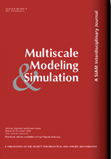
MULTISCALE MODELING & SIMULATION
Scope & Guideline
Exploring the synergy of diverse scientific domains.
Introduction
Aims and Scopes
- Multiscale Modeling Techniques:
The journal emphasizes the development and application of multiscale modeling approaches that integrate phenomena occurring at different scales, such as molecular, mesoscopic, and macroscopic levels. - Computational Methods and Algorithms:
A core focus is on novel computational techniques, including finite element methods, Monte Carlo simulations, and machine learning algorithms, designed to enhance the efficiency and accuracy of multiscale simulations. - Interdisciplinary Applications:
The journal encourages submissions that apply multiscale modeling to a variety of fields, including materials science, fluid dynamics, biological systems, and complex networks, highlighting its versatility. - Theoretical Foundations:
Theoretical advancements in understanding multiscale interactions, homogenization techniques, and asymptotic analysis are crucial components of the journal's scope, aiming to provide a robust mathematical framework for multiscale models. - Inverse Problems and Optimization:
Research addressing inverse problems, optimization techniques, and parameter estimation in the context of multiscale modeling is an integral part of the journal's contributions.
Trending and Emerging
- Machine Learning and AI in Multiscale Modeling:
The integration of machine learning and artificial intelligence techniques into multiscale modeling is gaining traction, as researchers explore data-driven approaches to enhance model accuracy and efficiency. - Quantum and Stochastic Systems:
There is an increasing focus on quantum mechanics and stochastic processes within multiscale frameworks, highlighting the need for models that can handle the complexities of quantum behaviors and uncertainties. - Complex Fluid Dynamics and Soft Matter:
Emerging themes include the modeling of complex fluids and soft matter systems, reflecting the growing interest in applications related to biological systems, materials science, and engineering. - Adaptive and Real-Time Simulation Techniques:
The development of adaptive algorithms and real-time simulation methods is becoming more prominent, driven by the demand for efficient and responsive modeling solutions in dynamic environments. - Interdisciplinary Approaches:
There is a notable trend towards interdisciplinary research that combines insights from mathematics, physics, biology, and engineering, facilitating the application of multiscale modeling across diverse fields.
Declining or Waning
- Traditional Homogenization Techniques:
There is a noticeable reduction in papers relying solely on classical homogenization methods without incorporating advanced computational techniques or machine learning approaches. - Purely Theoretical Studies:
Submissions that focus exclusively on theoretical aspects without practical applications or computational implementations are becoming less frequent, as the field increasingly values applied research. - Simplistic Models for Complex Systems:
The journal is seeing fewer submissions that propose overly simplistic models for complex systems, indicating a shift towards more sophisticated, realistic modeling approaches that account for multiscale interactions. - Static Multiscale Approaches:
Static models that do not incorporate dynamic interactions or temporal changes are declining, as researchers are now more focused on dynamic and time-dependent multiscale phenomena.
Similar Journals
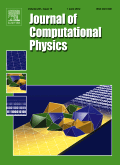
JOURNAL OF COMPUTATIONAL PHYSICS
Innovating Insights in Numerical Analysis and SimulationJOURNAL OF COMPUTATIONAL PHYSICS, an esteemed publication from ACADEMIC PRESS INC ELSEVIER SCIENCE, serves as a premier platform in the field of computational physics and its interdisciplinary applications. Since its inception in 1966, the journal has provided invaluable insights and significant advancements in areas such as applied mathematics, numerical analysis, and modeling and simulation. With a robust impact factor and ranking in the top quartile across various related categories, including Q1 in Applied Mathematics and Physics and Astronomy, it is essential reading for researchers and professionals aiming to stay at the forefront of computational techniques and methodologies. Although the journal is not open access, it remains highly regarded with a reputation for rigorous peer review and high-quality publications. As the field continues to evolve, the JOURNAL OF COMPUTATIONAL PHYSICS highlights innovative research that not only advances theoretical constructs but also offers practical applications in scientific and engineering domains. For scholars and students, this journal embodies a critical resource for deepening their understanding and fostering dialogue within the scientific community.

SIAM JOURNAL ON NUMERICAL ANALYSIS
Charting the Course for Future Numerical DiscoveriesSIAM Journal on Numerical Analysis, published by SIAM Publications, is a leading academic journal dedicated to the rigorous exploration of numerical methods and algorithms across applied and computational mathematics. Since its inception in 1969, this journal has played a pivotal role in advancing the field, achieving a distinguished impact factor that places it in the Q1 quartile for Applied Mathematics, Computational Mathematics, and Numerical Analysis as of 2023. With Scopus rankings reflecting its high influence (Rank #102 in Applied Mathematics and Rank #16 in Numerical Analysis), this journal serves as an essential resource for researchers, professionals, and students aiming to stay abreast of cutting-edge developments in numerical methods. The journal's comprehensive scope covers theoretical advancements, implemented algorithms, and applications, making it indispensable for those engaged in high-level quantitative research and practice. Readers can access a wealth of innovative studies and insights, fostering a deeper understanding of numerical analysis techniques and their practical applications.

SIAM JOURNAL ON SCIENTIFIC COMPUTING
Unleashing the Power of Algorithms for Scientific DiscoverySIAM Journal on Scientific Computing is a premier journal published by SIAM Publications, focusing on the interdisciplinary domain of scientific computing. With a significant standing in the academic community, this journal boasts a 2023 Q1 ranking in both Applied Mathematics and Computational Mathematics, positioning it among the top-tier publications in these fields. The journal aims to disseminate high-quality research that applies computational methods to solve scientific and engineering problems, fostering advancements in numerical analysis, algorithms, and software development. Researchers and professionals can greatly benefit from the journal's rigorous peer-review process and its reputation for publishing cutting-edge studies. Though it is not an open-access journal, subscribing institutions and individual subscribers gain access to a wealth of knowledge tailored for those seeking to enhance their expertise in scientific computation. With its established history since 1996 and continuing to publish until 2024, the SIAM Journal on Scientific Computing remains an essential resource for students, researchers, and professionals dedicated to pushing the boundaries of this dynamic field.

Advances in Aerodynamics
Elevating Engineering Disciplines through Cutting-Edge Research.Advances in Aerodynamics is a premier scholarly journal published by SPRINGERNATURE, dedicated to the innovative fields of Aerospace Engineering, Civil and Structural Engineering, Mechanical Engineering, and various aspects of Modeling and Simulation. Since its inception in 2019, this open-access journal has rapidly gained recognition, achieving a commendable Q1 ranking in several engineering categories as of 2023. With its compelling focus on pioneering research and advancements in aerodynamics, it serves as an essential platform for original research articles, reviews, and technical notes that address both theoretical frameworks and real-world applications in sustainable engineering practices. With an impact factor fostering its prominence and visibility in the academic community, the journal provides accessible content that fosters knowledge dissemination among researchers, industry professionals, and students alike. Situated in Singapore and with a commitment to rigorously peer-reviewed research, Advances in Aerodynamics is positioned to play a pivotal role in shaping the future of aerodynamics and its applications across various engineering disciplines.

SIAM-ASA Journal on Uncertainty Quantification
Transforming complex challenges into actionable knowledge.The SIAM-ASA Journal on Uncertainty Quantification, published by SIAM PUBLICATIONS, is a premier journal dedicated to advancing the field of uncertainty quantification across various disciplines, including applied mathematics, statistics, and simulation modeling. With an impressive impact factor that places it in the Q1 quartile in multiple categories such as Applied Mathematics and Statistics and Probability, this journal represents the pinnacle of research quality and relevance. Established in 2013, it has garnered a significant readership and citation rate, reaffirming its critical role in addressing complex uncertainty challenges in modern science and engineering. Although not an open access journal, it provides a platform for rigorous peer-reviewed articles that offer insightful methodologies and applications vital to both research and industry practices. Researchers, professionals, and students will find in its pages a wealth of knowledge that drives the future of quantitative analysis, modeling, and problem-solving in uncertain environments.

International Journal of Numerical Analysis and Modeling
Empowering Knowledge Exchange through Open AccessThe International Journal of Numerical Analysis and Modeling, published by ISCI-INST SCIENTIFIC COMPUTING & INFORMATION, is a leading platform for research in the field of numerical analysis. With an ISSN of 1705-5105 and an E-ISSN of 1705-5105, this esteemed journal has been disseminating rigorous and innovative studies since its inception in 2004. Covering a diverse range of topics within numerical analysis, it has successfully positioned itself in Q2 of the 2023 category quartiles and ranks 46th out of 88 in its Scopus classification, showcasing its relevance and impact within the academic community. Operating under an open access model, it ensures that research findings are accessible to a global audience, fostering collaboration and knowledge exchange. Based in Canada, this journal not only highlights advancements in computational methodologies but also addresses real-world applications, bridging theoretical frameworks with practical solutions. Researchers, professionals, and students alike will find valuable insights and up-to-date contributions in this crucial field of study.
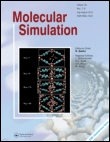
MOLECULAR SIMULATION
Innovating computational methods for complex molecular challenges.MOLECULAR SIMULATION, published by TAYLOR & FRANCIS LTD, stands as a pivotal platform in the interdisciplinary landscape of molecular modeling and simulation, bridging the fields of chemistry, physics, and materials science. Since its inception in 1987, this journal has been dedicated to publishing high-quality research that advances the understanding of complex molecular systems. With a variety of articles covering innovative computational methods and their applications across diverse domains, it resonates well with both established researchers and emerging scholars. Although currently not an open access journal, it maintains a respectable presence within the academic community, illustrated by its Q3 quartile rankings in key categories such as Chemical Engineering, Condensed Matter Physics, and Information Systems as of 2023. Further, its Scopus rankings position it favorably within the respective fields, making it an essential resource for anyone interested in the quantitative aspects of molecular research. With its comprehensive scope, MOLECULAR SIMULATION continues to foster collaboration and innovation, helping to bridge theoretical research with practical applications.
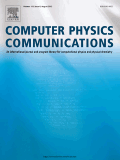
COMPUTER PHYSICS COMMUNICATIONS
Bridging Computer Science and Physics InnovationCOMPUTER PHYSICS COMMUNICATIONS is a premier journal published by Elsevier, renowned for its contributions to the fields of computer science and physics. With an ISSN of 0010-4655 and an E-ISSN of 1879-2944, this journal has established itself over the decades, beginning its journey in 1969 and running through 2025, fostering innovative research and discussions. Recognized for its high impact, it sits in the Q1 quartile for both Hardware and Architecture as well as for miscellaneous Physics and Astronomy, underscoring its significance in the academic community. The journal's Scopus rankings further reflect its prestige, with a rank of #12 out of 177 in Computer Science and #18 out of 243 in Physics and Astronomy, placing it in the top percentiles of its field. Although it does not currently offer Open Access options, COMPUTER PHYSICS COMMUNICATIONS remains a vital resource for researchers, professionals, and students seeking to advance their knowledge and contribute to the ongoing dialogue in computer physics and its myriad applications.
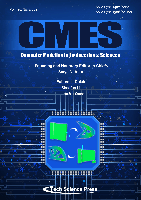
CMES-COMPUTER MODELING IN ENGINEERING & SCIENCES
Transforming Complex Systems with Cutting-edge ResearchCMES-COMPUTER MODELING IN ENGINEERING & SCIENCES is a premier journal published by Tech Science Press, dedicated to advancing knowledge in the fields of computer science applications, modeling and simulation, and software engineering. With an impressive convergence of research from 2000 to 2024, this journal stands out as a vital resource for researchers, professionals, and students alike, fostering innovation and collaboration in computational methodologies. The journal currently holds a Q3 category ranking in multiple disciplines according to the latest metrics, including Scopus, which reflects its growing significance in the academic community. By providing a platform for high-quality research and open discourse, CMES aims to enhance the understanding of complex systems through effective modeling techniques and computational tools. Despite its current classification under open access, the journal remains a cornerstone for those looking to deepen their expertise in cutting-edge computational engineering and science.
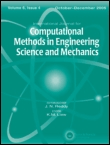
International Journal for Computational Methods in Engineering Science & Mechanics
Connecting Researchers to the Future of Computational ScienceThe International Journal for Computational Methods in Engineering Science & Mechanics, published by Taylor & Francis Inc., serves as a vital resource for researchers and professionals involved in the fields of computational mathematics and mechanics. With an ISSN of 1550-2287 and an E-ISSN of 1550-2295, this journal has been a cornerstone of scholarly communication since its inception in 2005 and will continue to publish cutting-edge research through 2024. Its impressive Scopus rankings highlight its impact within the field, placing it in the top quartiles for both Computational Mechanics (Q2) and Computational Mathematics (Q3), showcasing its significance for academics striving to push the boundaries of these disciplines. The journal features high-quality peer-reviewed articles that emphasize innovative computational methods, numerical analyses, and their applications in engineering science. While currently not available as an open-access option, this publication remains an essential reference for those seeking to stay at the forefront of computational methodologies in engineering practice.